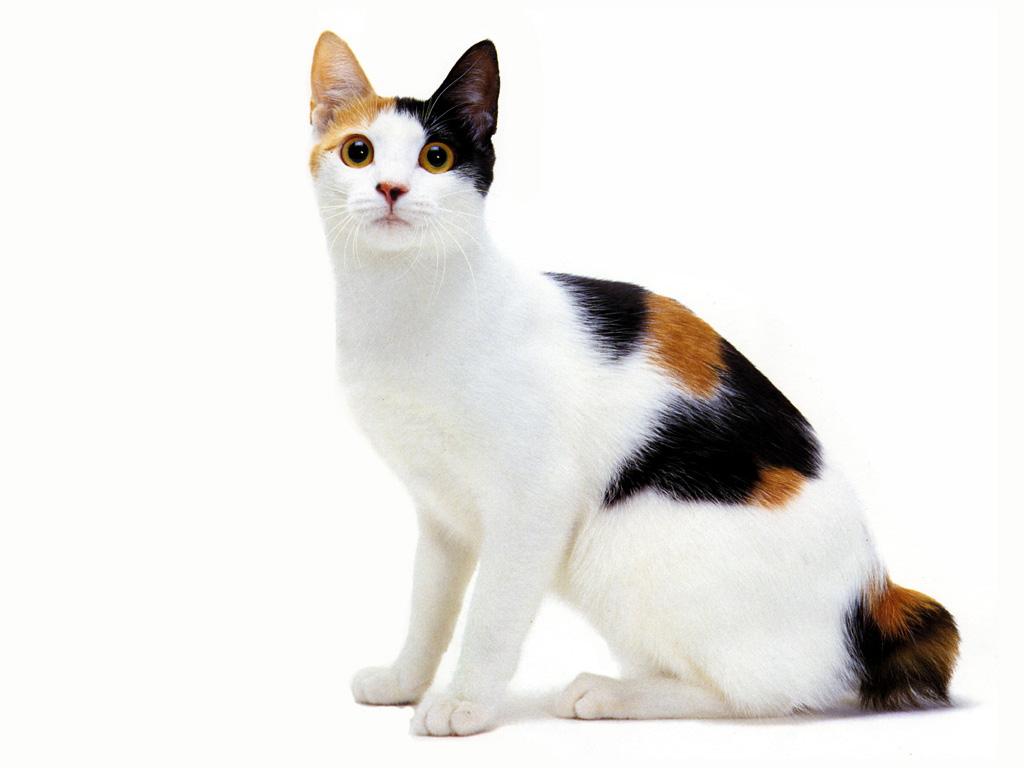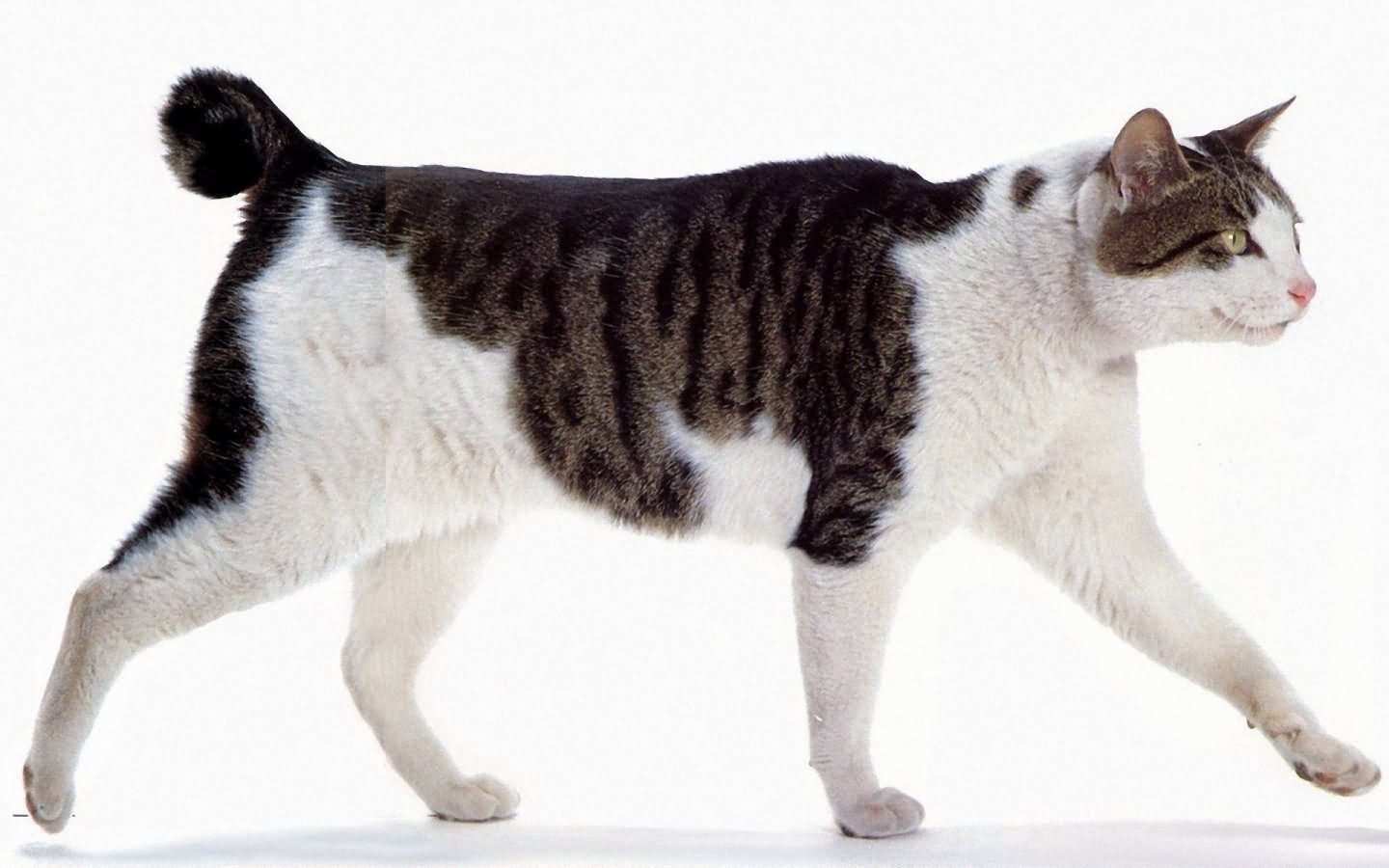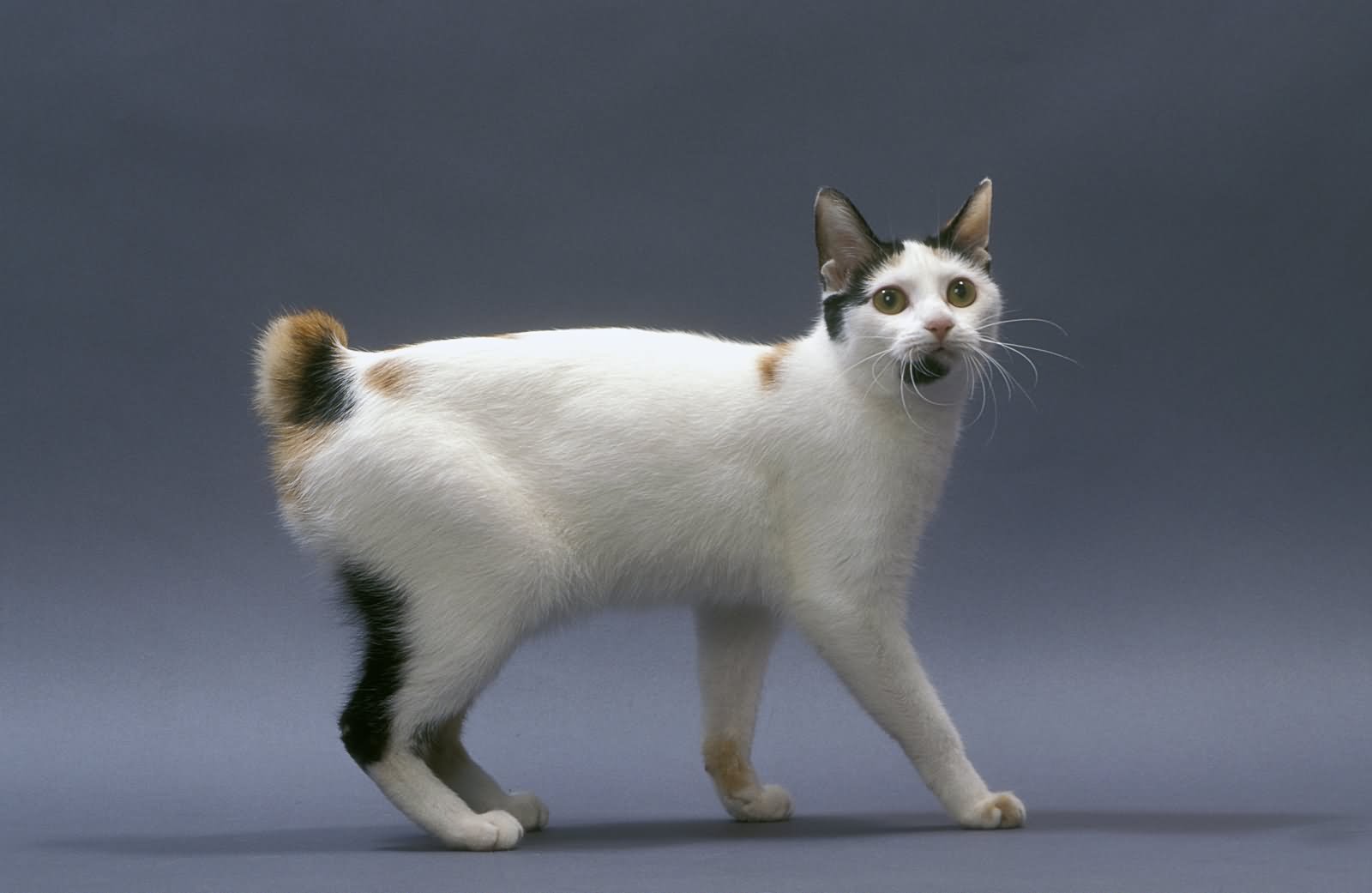
Best Japanese Bobtail Cat Guide – Characteristic & Cat Care
The Japanese Bobtail Cat has been a popular domestic cat in Japan, China and Korea for many centuries. The Bobtail was mentioned in Japanese literature almost 1000 years ago and was portrayed in woodcuts and silkscreen paintings that date back to the early 17th century. One famous tale concerns a small bobtail female cat named Maneki-Neko that raised a paw and beckoned to strangers giving them good fortune. Stylized renditions of the maneki-neko are found on the façade of a Buddhist temple near Tokyo and on many store fronts and in many restaurants.
While these cats are usually only seen at cat fancy shows in the US, they can be seen everywhere in Japan. Tri-colored (white with patches of red and black) cats are called Mi-Ke (mee-kay) and are very popular in Japan. However the formal US breeding program was started by Elizabeth Freret when she imported 3 Bobtails from Japan in 1968. The Cat Fanciers’ Association (CFA) accepted the breed for registration in 1969 and accepted the Japanese Bobtail for Championship status in 1976.
The Japanese Bobtail’s unique feature is its shortened rigid tail structure which gives it its name. The bobtail is a recessive gene and is passed on only through Bobtail to Bobtail mating. No out-crossing is allowed. Recently a semi-longhaired version of the cat has been recognized by the CFA. The longhaired version is not very common as it is a result of breeding two cats with a longhaired recessive gene. The resulting litter will only be 1/3rd longhaired Japanese Bobtails Cat.

| Cat size | Small to medium |
| Exercise | Active – requires regular exercise and games |
| Grooming | Shorthair – light but semi-longhair needs slightly more grooming |
| Temperament | Playful, affectionate, intelligent, good with children and pets but needs attention |
Contents
Japanese Bobtail Cat Characteristics

The Japanese Bobtail is a small to medium-sized cat (6 to 9 pounds) with a long, lean, narrow-chested and well muscled body. The vestigial tail is short (about 3 inches) but curls into a corkscrew shape so it appears like a rabbit’s pom-pom. The high chiseled cheek bones emphasize the length of the head. The ears are large and set fairly far apart and tipped slightly forward. The eye color should harmonize with the color of the coat. The legs are long with small oval paws. The Japanese Bobtail coat should feel soft and silky not hard. Both varieties will have little or no undercoat, but the longhaired variety will have a medium-long coat with a frontal ruff, hind leg britches and ear and toe tufts.
Color Varieties
All colors and patterns are permitted with the exception of point-restricted Siamese or Abyssinian agouti patterns. The most popular color for a female is calico which is known to the Japanese as mi-ke. Other popular colors are red and white, black and white, solid colors without white markings (black, blue, red, cream. tortoiseshell, white) and tabbies. Recently dilute colors, smokes and silvers are also being seen in North America.
Temperament Of Japanese Bobtail Cat

Japanese Bobs are active, curious, bold, and intelligent but very affectionate towards their family. The Bobtail is strong-willed and not easily intimidated which makes it a good cat for children and households with dogs but can also make it difficult to train. They learn easily and can be trained to walk on a leash and play various games as long as they are having fun. Bobtails even like to swim as their coats are water-resistant. Negative re-enforcement like a water pistol doesn’t work with this breed. This breed needs lots of attention and needs to be kept active. Bobtails have to have companionship – either human or another cat. A bored Bobtail can express its dissatisfaction through destructive behavior. Bobtails have a quiet voice but like to chirp or sing while they are making conversation. Bobtails are great companion cats, easy to show, adapt well to a family environment but need companionship. If you plan to leave your Bobtail alone for any period of time then you better acquire another cat.
Cat Care
Japanese Bobtails are a hardy, strong and healthy breed with a low kitten mortality rate and high disease resistance. They are easy to groom but the semi-longhair will need regular grooming when shedding. The kittens are active very early and will walk and start getting into mischief earlier than most breeds.
